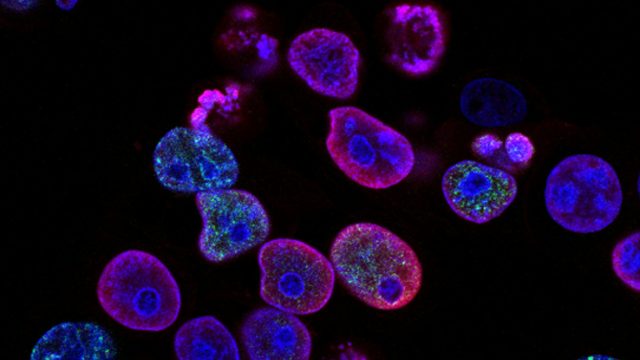
Title: Deterrence in the Age of Weaponizable Biotechnology
Recent developments in genetic engineering and synthetic biology are enabling unprecedented biological capabilities, offering thrilling medical possibilities. Combined with rapid innovations in emerging technologies such as data-driven machine learning (“artificial intelligence”), nanotechnology, neurotechnology, and robotics, these advances also raise the alarming prospect of genetically engineered bioweapons, or “genetic weapons.” Such weapons would be nearly impossible to deter due to high variability, undetectability, and unattributability. Addressing the threat of genetic warfare will require a concerted and sustained global effort before it becomes an irreversible reality.
Introduction
When physicist Herman Kahn posed the possibility of nuclear war in his 1960 book On Thermonuclear War, he was contemplating what then seemed unthinkable. At the time, the United States was believed to have achieved deterrence, having pledged to respond to any attack with “massive” force. Kahn argued that avoiding nuclear conflict required persuading adversaries that one is both ready and willing to absorb a first strike—and then retaliate in kind. While signaling readiness involves maintaining second-strike capability, demonstrating resolve requires contemplating and preparing for the worst-case scenario.
Six and a half decades since Kahn unsettled the strategic establishment, the problem of deterrence remains unsolved—and is increasingly unsolvable. Emerging technologies, structural shifts in the international system, and a growing number of actors with divergent perceptions and preferences have further complicated an already fragile equation, as Vipin Narang and Scott Sagan have observed.
The prospect of biological war is no longer hypothetical. Advances in genetic engineering and synthetic biology, combined with rapid innovations in machine learning (“artificial intelligence”), nanotechnology, neurotechnology, and robotics, are enabling novel biological capabilities. These developments offer powerful tools for reimagining health care and climate solutions, but they also introduce the danger of genetically engineered bioweapons, or “genetic weapons.”
Their variability, undetectability, and the difficulty of attribution make them offense-dominant and extremely difficult to defend against. As a result, genetic weapons threaten to collapse the very foundation of deterrence thinking—posing a novel and destabilizing challenge that cannot be addressed through traditional military logic. Preventing a catastrophic genetic arms race will require a level of international cooperation far beyond what has been achieved previously.
Out with the Old, in with the New Biological Weapons
Experts have long considered biological weapons to be inefficient, unpredictable, and more likely to harm their users than their intended targets. With a few horrific exceptions, modern states have largely avoided weaponizing biological agents. During the Cold War, both the United States and the Soviet Union researched and produced bioweapons but refrained from using them. In 1969, the United States formally renounced biological weapons. President Richard Nixon cited their “massive, unpredictable, and potentially uncontrollable consequences,” including the risk of pandemics and long-term genetic harm. His decision marked the first time a major power had unilaterally abandoned an entire category of weapons.
Nixon believed bioweapons offered limited tactical value on the battlefield and were unreliable as strategic deterrents. He also calculated that a public rejection of biological weapons would make it easier to justify the continued use of chemical weapons, which the Pentagon valued more highly. By doing so, he hoped to “dampen criticism” of the US military’s use of tear gas and herbicides in Vietnam, practices his administration planned to maintain.
While chemistry and physics dominated the nineteenth and twentieth centuries, the twenty-first century is increasingly described as the “age of biology.” Human progress now hinges more on advances in the life sciences and their convergence with genetic engineering and artificial intelligence. Recent breakthroughs in AI-enabled gene editing, the construction of artificial viral vectors for genome remodeling, protein folding, and the creation of custom proteins are progressing faster than regulatory systems can keep up. These developments are facilitating the weaponization and delivery of harmful bioagents, overcoming many of the challenges that previously made biological weapons impractical.
The strategic potential of genetic weapons is gaining global attention. In 2012, Russian President Vladimir Putin predicted that nuclear weapons would be surpassed by “fundamentally new instruments for achieving political and strategic goals.” He anticipated a future of warfare based on “new physical principles,” including genetic science. In 2016, the US intelligence community’s worldwide threat assessment identified genome editing as a potential weapon of mass destruction. China’s 2020 edition of Science of Military Strategy, a key textbook from the National Defense University, described biotechnology as “a brand-new territory for the expansion of national security.” In 2024, NATO adopted a strategy to guide the development and use of biotechnologies for defensive purposes.
A More Divided and Paranoid World
The emergence of genetic weapons capabilities comes at an especially fraught moment. The rules-based international order is unraveling, and the prospects for nuclear, let alone biological, cooperation between great powers are at an all-time low.
A rapidly evolving and increasingly complex landscape of global developments, such as China’s growing nuclear arsenal, is generating new strategic concepts with far-reaching security implications. These include the two-peer problem (the challenge of deterring and defending against two nuclear-armed states—Russia and China—simultaneously), tailored deterrence (crafting specific threats to suit each adversary), cross-domain deterrence (using retaliatory threats in one domain to deter aggression in another), and integrated deterrence (coordinating deterrence efforts across multiple domains, allies, and regions).
At the same time, great powers are reviving the specter of biological warfare with growing regularity. In 2022, Russia’s foreign ministry accused the US Department of Defense of funding military-biological laboratories in Ukraine. Russia’s Defense Ministry claimed that these labs aimed “to establish a mechanism for the stealthy spread of deadly pathogens” via migratory birds, bats, reptiles, and mosquitos. The US Department of State dismissed the allegations as “absurd,” noting that it would be impossible to control bird migration in a way that would not also endanger Russia and its neighbors.
During the COVID-19 pandemic, Chinese officials and state media sought to divert attention from domestic policy failures by claiming that the virus may have leaked from a US Army lab. In response, the US military reportedly launched a covert influence campaign in the Philippines to discredit China’s Sinovac vaccine during the height of the pandemic.
Together, these structural developments and tit-for-tat disinformation campaigns erode the prospects for international cooperation. They also reinforce a growing “cry wolf effect,” in which repeated false alarms degrade trust and reduce the willingness of states to respond seriously to future biological threats.
The Limits of Deterrence
If deterrence depends on convincing adversaries that one is ready and willing to absorb a first strike and retaliate, a genetic attack may represent a nightmare scenario—even for someone like Kahn.
One possible strategy is to demonstrate resolve by developing effective countermeasures. This appears to be the aim of the US Defense Department’s Defense Advanced Research Projects Agency (DARPA) through its Safe Genes program. The initiative supports “force protection and military health and readiness by protecting Service members from accidental or intentional misuse of genome editing technologies,” while also aiming to “leverage advances in gene editing technology to expedite development of advanced prophylactic and therapeutic treatments against gene editors.”
However, countermeasures have limits. There are two main types of nuclear weapons: fission and thermonuclear. By contrast, genetic weapons could take countless forms.
This variability makes genetic weapons extremely difficult, if not impossible, to detect in advance. A nuclear explosion cannot be hidden; the immense heat and shock produce a distinctive mushroom cloud visible from miles away. A genetic strike, however, may occur without any visible sign, might not be detected immediately, and could remain difficult to identify over time. While DARPA’s current efforts to develop diagnostic and biosurveillance systems are promising, reliable and rapid pathogen detection remains a distant goal.
Unlike nuclear attacks—but similar to cyberattacks—a genetic strike may also be impossible to attribute. Whereas nuclear weapons programs are difficult, though not impossible, to monitor, biological weapons development is even harder to track. According to the Global BioLabs mapping project, launched in 2021 by Filippa Lentzos and Gregory Koblentz, at least 69 maximum containment laboratories (used for research involving the world’s most dangerous pathogens) are currently operating, under construction, or planned worldwide. Most of the new facilities are located in Asia. Alarmingly, only one of the 27 countries with known maximum containment labs has implemented effective oversight systems for dual-use research, according to Global BioLab’s 2023 report.
If deterrence is implausible in the case of genetic weapons, another path is needed. It is not sufficient for the United States to simply “out-innovate” its “strategic competitors,” as recommended by the National Security Commission on Emerging Biotechnology. The United States must advance its biotechnological capabilities without igniting a global genetic arms race.
This will require a concerted and sustained international effort: a diplomatic renaissance aimed at building a global regime for biological weapons control. That includes strengthening the Biological Weapons Convention agreement and establishing a formal verification system to ensure compliance. Such cooperation would have to surpass any previous effort in ambition and scope. While this may seem improbable, the emergence of a new, undeterrable weapon of mass destruction leaves diplomacy not just necessary, but the only survivable option.
…
Yelena Biberman is an associate professor of political science at Skidmore College, an associate at Harvard University’s Davis Center, and a new voice at the Andrew W. Marshall Foundation. She is currently working on a book about the technologies and international politics of genetic warfare. Her first book, Gambling with Violence, was published by Oxford University Press in 2019.
Image Credit: U.S. Army Cadet Command (Army ROTC), Public Domain Work, via Flickr
Recommended Articles

Export controls on AI components have become central tools in great-power technology competition, though their full potential has yet to be realized. To maintain a competitive position in…

The Trump administration should prioritize biotechnology as a strategic asset for the United States using the military strategy framework of “ends, ways, and means” because biotechnology supports critical national objectives…

Fiji, a Pacific Small Island Developing State (PSIDS), faces rural electrification challenges due to its dispersed geography and climate vulnerabilities. With 6 percent of Fijian rural households lacking…